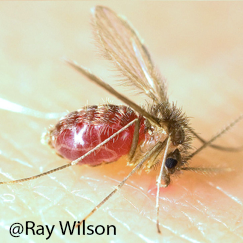Description
Material provided: Whole sandflies, dissected tissues, or extracts
Unit definition: 200 sandflies (100 if dissected)
Availability: This product is designed for projects that require up to 10 units of sandflies, infected sandflies or sandfly-derived products (all species combined) per order. The product is particularly aimed at pilot and exploratory-scale projects. Please contact the TNA Manager for larger requests or additional information.
Vector information
Family: Psychodidae
Genus: Phlebotomus
Species: Phlebotomus orientalis
Place of origin: Ethiopia
Date of colonisation: before 2010
Production protocol
Laboratory colony maintained under standard conditions at 26±1 °C, 90% relative humidity and 12/12 light/dark photoperiod. Larvae provided with standardized fermented diet (rabbit pellets/rabbit faeces), adults with constant access to cotton wool soaked with 50% sugar and a water source. For more details see the reference below.
Product options
Please specify in your request:
Sample size: For larger sample sizes, request more units.
Whole or dissected: Instead of 200 whole sandflies, material can be supplied from dissected material harvested at the appropriate time point: 100 dissected midguts or 100 dissected salivary glands, provided with the corresponding carcasses.
Form of material:
- Whole sandflies or dissected tissues, fixed in 70% ethanol, formalin, or other fixative: useful for DNA extraction from 70% ethanol, immunohistochemistry, not useful for RNA experiments or proteomics.
- Whole sanflies or dissected tissues, homogenised in a lysis buffer such as Trizol: useful for RNA, DNA and protein experiments.
- Whole sandflies or dissected tissues, frozen at -80°C or stored in RNALater: useful for RNA, DNA and protein experiments.
- Other formats or preparations may be possible by request, contact us.
Publications
- Volf et Volfova (2011) Establishment and maintenance of sand fly colonies. J Vector Ecol 36 (Suppl 1): S1-S9.
- Seblova et al. (2013) Phlebotomus orientalis sand flies from two geographically distant ethiopian localities: biology, genetic analyses and ausceptibility to Leishmania donovani. PLOS NEGLECTED TROPICAL DISEASES 7: Article N. e2187.
- Sadlova et al. (2015) Xenodiagnosis of Leishmania donovani in BALB/c mice using Phlebotomus orientalis: a new laboratory model. Parasit Vectors. 8:158.
For more information, please contact us.

